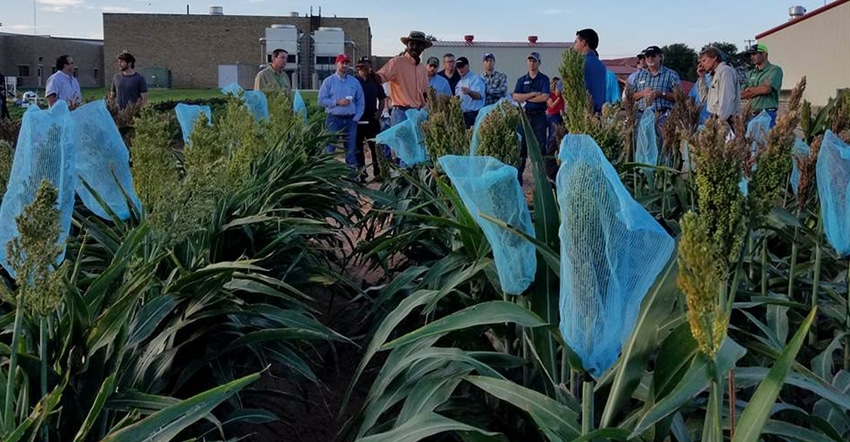
For Del Ficke, sorghum isn't just a rotation crop — it's his go-to forage for his cow herd and his Graze Master Beef program. "We've been using milo since the '50s, since my dad first used it in his feedlot operation," says Ficke, owner and operator of Ficke Cattle Co. and Graze Master Genetics near Pleasant Dale. This includes grazing grain sorghum and sorghum sudangrass, as well as feeding grain sorghum in the ration as part of its meat program. "I'm a big believer in sorghum sudan for its good grazing, good grain quality and great soil armor."
Of course, one of the reasons sorghum makes such great forage is the high sugar content in sorghum stalks.
"Especially for sorghum sudan, which has taller stalks. After we grazed it the first time last summer we had five to seven tillers per plant. We grazed it again when it had seven to 10. Then a third time we had 12 to 15," Ficke says. "If you had an early enough growing season, there's a huge advantage to grazing sorghum sudan. It seems like it multiplies over each time you take those tillers off. You get really beautiful cover at the end of the season. You get more ground cover anytime you're getting more plants to tiller."
But for Ficke, who also grows sorghum as a cover crop, it's also a valuable tool to build soil health. On one particular 5-acre field, Ficke has been able to increase organic matter from 2.6% to 6.9% over the last 10 years. He's accomplished this with the help of animal traffic and grazing sorghum sudangrass, in addition to a number of cover crop mixes.
"It really has a nice set of channels for that water to go down, especially if you have a good earthworm population," he says. "It is my absolute go-to crop for building soil and covering that soil. We put it on some really poor ground in the last few years and we were able to see results pretty fast."
Cutting-edge sorghum research
Ficke, who is a member of the National Leadership Sorghum Class III, recently visited USDA Agricultural Research Service's sorghum facility in Lubbock, Texas, and Richardson Seeds near Vega, Texas, as part of the Leadership Sorghum program. What he saw there piqued his interest as a grazier.
"[USDA ARS] is bringing back centuries-old sorghum varieties that have been basically untouched. They said only 3% of the whole gene pool of sorghum varieties in the world have been utilized," Ficke says.
This included evaluating sorghum for cold tolerance — a major focus of ARS's research to help extend sorghum's range into colder climates, such as northern Nebraska and the Dakotas.
Meanwhile, Richardson Seeds is developing a short-season brown mid-rib (BMR) sorghum, allowing growers to harvest it early, graze the residue and then establish cover crops.
"That's interesting to me, because that's what I would do. If you planted milo in the spring, you could harvest it in early fall, late summer, and then have a great opportunity to establish cover crops," Ficke says. "You can also graze the residue off the stalks that have a lot of value, and all of a sudden you're making a great cattle feed package to graze it quick and then establish more feed as cover crops."
Throughout the next year, Ficke and other members of the Leadership Sorghum program will visit several additional links in the sorghum value chain, wrapping up with a Sorghum Checkoff Board Meeting in December. "I consider sorghum a best-kept secret," Ficke says. "Sorghum has a lot of advantages for grazing and soil health, and I'm looking forward to exploring more of what it has to offer."
About the Author(s)
You May Also Like






